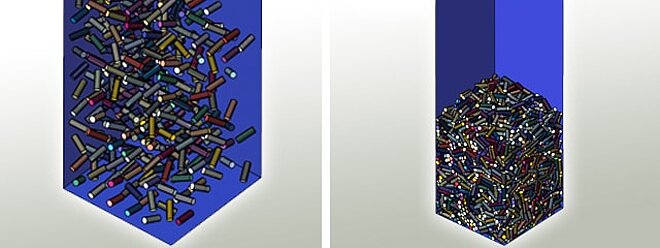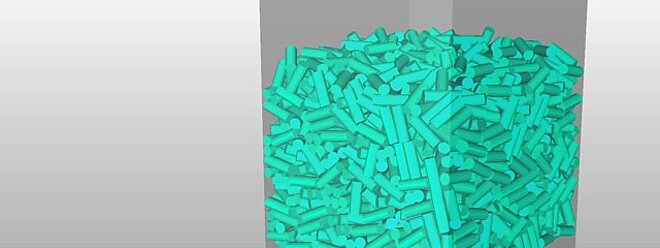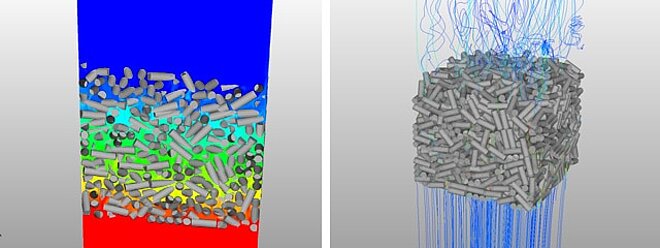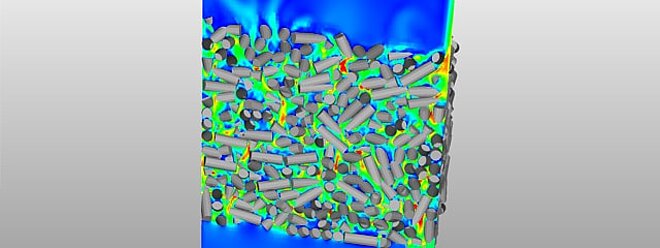Packing simulation


Method Development for Numerical Optimization of Packings for the Chemical Industry
The production of new packing geometries is currently carried out by means of elaborate tests, which incur considerable costs. In addition, these manual tests lead to a high development effort in terms of time. This results in an expensive and lengthy production process. Merkle & Partner then plans to develop a simulation model that will make it possible to investigate and optimize different packing materials. This should save time-consuming test procedures for different chemical substances and geometry variants. Various demands are placed on the packing, which can be represented and taken into account by the developed method:
- high loadability with gas and liquid
- large, volume-related phase boundaries with simultaneously low pressure loss
- optimum mass transfer conditions
- good wettability for the liquid
- low tendency to creek formation and edge mobility
- sufficient mechanical strength
- production from a wide range of materials
- low manufacturing costs
Practical example multi-body simulation
The design of a new tower packing is created three-dimensionally using CAD. A multibody simulation is used to numerically fill a container with tower packings. Contact is described between all the packing elements. Through friction, the individual bodies finally come to rest.
Practical example 3D geometry
The data is extracted as a 3D model and fused into a volume.
Practical example networking
Boolean operations are used to create the volume flowed through and mesh it with mesh generators.
Practical example flow simulation
A 3D flow simulation is then created, which can be used to determine the required characteristics of the packing in terms of pressure drop, flow rate, etc.
Project results
Through the various visualization options, conclusions can be drawn about the geometry of the packing and, if necessary, a new calculation run can be carried out with a modified and optimized geometry.
Since this process is purely virtual, it can be carried out until the packing has the required properties.
Packings can now be designed more quickly and efficiently for the chemical industry. Existing packings can be analyzed and optimized. Due to the improved efficiency of the packing, plants can be built more compactly in the future or designed for larger flow rates, resulting in lower energy consumption and faster production times.




